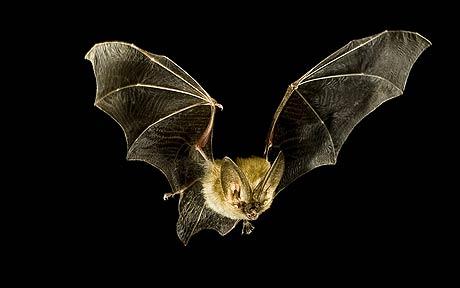
Now, the Church of England is to hold its first summit to examine how to save its buildings from bats, which are estimated to nest in more than a third of all parish churches.
Experts will meet next week at Lambeth Palace, the residence of the Archbishop of Canterbury, to develop a national strategy to tackle a problem costing hundreds of thousands of pounds.
The number of bats roosting in churches has grown as woodland has been destroyed and it has become increasingly popular to convert barns into homes.
Some rural churches are struggling to stay open as the problem is particularly acute in the countryside, where the congregations tend to be much smaller.
The medieval church of St Andrew in the village of Holme Hale, Norfolk, has only 20 worshippers and struggled to raise the necessary £2,500 to have the building cleaned of bat droppings and urine.
It has a colony of 260 Natterer's bats and has been finding it hard to keep the building fit for worship.
Anne Sloman, chairman of the Church Buildings Council, said, "We estimate that around 6,400 parish churches in England are used by bats which are, of course, a protected species.
"The very last thing anyone wants to do is to harm the bats, but the reality is that their droppings and urine are causing huge damage to the fabric of our buildings and are a health hazard for the congregations who want to worship there, as well as to visitors who wish to explore our great heritage."
One potential solution that has been trialled in Norfolk is to attract bats back to belfries.
The hope is that if the creatures can be enticed to nest in bell-towers instead of inside main church buildings, congregations will be spared the cost of cleaning and the damage caused to valuable artefacts.
Among the churches at risk is All Saints in Toftrees, Norfolk, which has survived virtually untouched since the eleventh century.
Now its parishioners fear that its treasures, including one of the country's most precious Norman fonts, will be damaged by bat droppings.
The Rt Rev Graham James, Bishop of Norwich, said: "Bats are wonderful creatures. But they don't belong in churches any more than they do in people's homes. Bat urine and faeces are destructive of the fabric of our churches. They also prevent our churches being good places of worship for human beings too.
"It's time this crisis for some of our rural churches was recognized."
Between 1978 and 1986, the number of more common species, such as pipistrelles, fell by 62 per cent and there was a decline of 70 per cent of the rarer species such as greater horseshoe bat from 1963 to 1986.
All British bats have been protected by law since 1982 following a decline in most species in past decades. Intentionally disturbing a bat in roost, damaging its breeding or resting place or obstructing access to a bat roost are all criminal offenses.



The symbolism here is almost
too much for one person to bear.